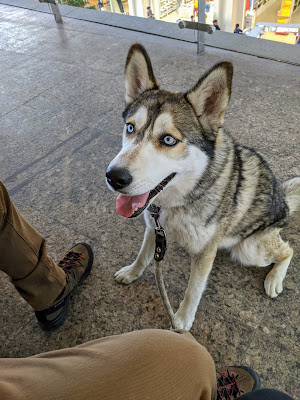Week 12 Story Lab: Language
The videos that interested me most in this playlist were the ones about the development of languages, especially the development of the English language. The English we speak today sounds so different from that of the old Anglo-Saxons (i.e. Old English), but it actually forms the basis of the language we speak today. I had known about the influence of Germanic and Latinate languages on English, but I hadn't known about the words we use that have Nordic roots (like leg, freckle, skin, want, and root), thanks to the Brittons mixing with their Danish neighbors. I also hadn't known that after the Norman conquest of the British Isles, the royalty spoke French for three centuries afterwards. The words we have that come from different roots have different images in our minds (the example the video used was "hearty" and "cordial", which have different roots and invoke different images in our minds). The role language plays in our lives, in how we think and perceive the world, is an amazing thing. It's something that scholars are still trying to fully understand.
The other video that stood out to me was the video about fictional languages (conlangs) like Elvish, Klingon, and Dothraki, and whether or not they constitute real languages. These conlangs are not languages simply because of the number of words in their vocabulary (though having a lot of words helps). We can tell the difference between a code or a set of slang and an actual language by looking at the way Tolkien created Elvish. A real language has grammar, or a way to structure sentences, and isn't just a collection of words that have their own individual meanings. Elvish has grammar, and a way to construct verbs in different tenses. A real language evolves over time. Tolkien constructed an older version of Elvish, and also has different dialects of Elvish that belong to different geographical groups. I used to assume that these kinds of fictional languages were just random vocabulary words made up and strung together, but this video taught me that true conlangs are actually very carefully constructed to function like a real language. That means that just one person has the capacity to construct an entire language, and therefore a new way of thinking. The other video I discussed said that it is impossible to know how many languages exist in the world today, but experts believe it is between 3,000 and 8,000. When I first heard that number, it seemed excessive, but now knowing how easily languages can evolve and split off from each other, it doesn't seem that crazy.
 |
| How to create your own language (Source: Writer's Domain) |
The other video that stood out to me was the video about fictional languages (conlangs) like Elvish, Klingon, and Dothraki, and whether or not they constitute real languages. These conlangs are not languages simply because of the number of words in their vocabulary (though having a lot of words helps). We can tell the difference between a code or a set of slang and an actual language by looking at the way Tolkien created Elvish. A real language has grammar, or a way to structure sentences, and isn't just a collection of words that have their own individual meanings. Elvish has grammar, and a way to construct verbs in different tenses. A real language evolves over time. Tolkien constructed an older version of Elvish, and also has different dialects of Elvish that belong to different geographical groups. I used to assume that these kinds of fictional languages were just random vocabulary words made up and strung together, but this video taught me that true conlangs are actually very carefully constructed to function like a real language. That means that just one person has the capacity to construct an entire language, and therefore a new way of thinking. The other video I discussed said that it is impossible to know how many languages exist in the world today, but experts believe it is between 3,000 and 8,000. When I first heard that number, it seemed excessive, but now knowing how easily languages can evolve and split off from each other, it doesn't seem that crazy.



Comments
Post a Comment